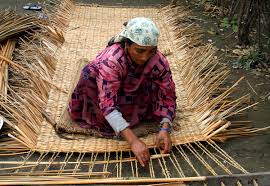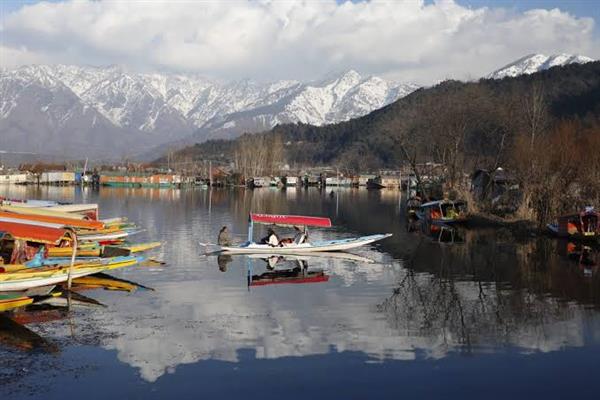In the age of expanding economy, Wagoo, a traditional reed mat has lost its place in Kashmir households.
The local reed mat, which was once present in every household of Kashmir, is struggling for its existence.
A young writer and IT Developer, Tawseef Lone said that in an expanding economy, growing demand for contemporary lifestyles and booming investment in tourist infrastructure were combining to create new opportunities for professionals. However some of the traditional crafts have also faced the extinct. “In case of Wagoo, the contemporary polymers are the biggest reason,” Lone said.
He also said that Sultan Mohalla of SaidaKadal locality in Srinagar was known for producing these reed mats. “These beautifully woven reed mats would furnish the floors in the length and breadth of every Kashmiri households,” he said, adding that weaving these mats was an important activity in the area.
Every morning, after having tea, Mala takes reed, a tall stiff grass, outside in the sun before using it in weaving. Interlocking the rope firmly with reed, she continues the process as it gets the face of Wagoo, a Kashmiri traditional mat.
Her hands have developed cracks with the years of weaving. She dips the robe in the water so that the rope gets soft and doesn’t hurt her hands. Also, the technique is used to hold the rope with the reed firmly, as she says.
Mala says, “I have been working on it from three days and it’s still incomplete. When I was young and the profit was good, I used to make two in a day.”
Now with old age, the laborious work is straining her nerves, slowing down her pace of weaving. Also, the low demand of Wagoo in the market has made her dispassionate.
“Not only in old city but people living in posh areas used to buy Wagoo. I have married off my two daughters on the profits that I used to get from it,” she said.
In the district Srinagar, Kachur Mohalla and its adjacent areas, situated in the interior of the Dal Lake, are known as the hub of Wagoo making. It is believed that people of these areas were associated with the art from decades.
People are finding alternatives to the traditional flooring. Once found in every household, now the use of Wagoo is on decline, as a result, the art and the artisans are trying hard for the survival.
Adding more to the woes, locals couldn’t find adequate reed available in Dal Lake, one has to transport it from Anchar Lake which gets even costlier.
Another artisan, Haseena after practicing the art for 20 years finally gave up after her health was severely affected.
She says, “One can get easily infected with the mud and dust of the reed. Apart from that, one develops back complications with continuous weaving. My medicines would cost more than my earnings.”
She joined the center set up by the Handicraft Department where she earns Rs 500 per month, in which she is “content.”
The artisans make two types of Wagoos, Wathrun and Bazari which differ in the thickness. The former is fluffier as it is weaved intricately.
The Wagoo is said to have good insulating properties, it keeps the room warm in winters and cool in summers. Used in every occasion, Haseena named it, “medicine.”
Ghulam Nabi, a Wagoo seller says, a Wagoo is sold in a market for 200 or even less. “How much profit would a seller and a maker gets,” adding, “people prefer foam nowadays and other things but they don’t consider the benefits Wagoo gives them.”
The artisans complain that government has failed to recognize them as artisans. Due to the non-seriousness of government in providing subsidy or loans, many artisans have switched into something else.
“Some have opted paper-machie business. Some are with handicrafts because you can have huge profit in that,” say artisans.
Wagoo, traditional reed mat loses relevance in Kashmiri households






